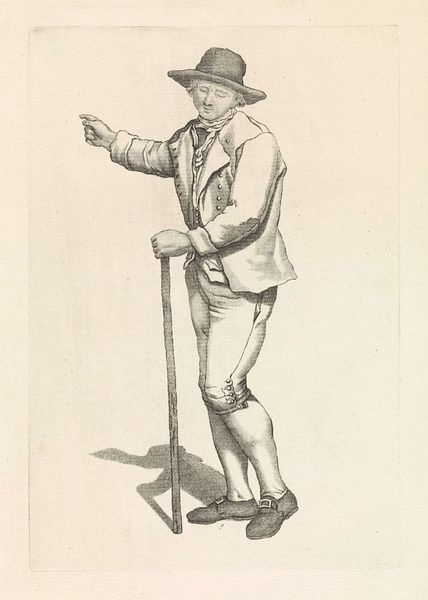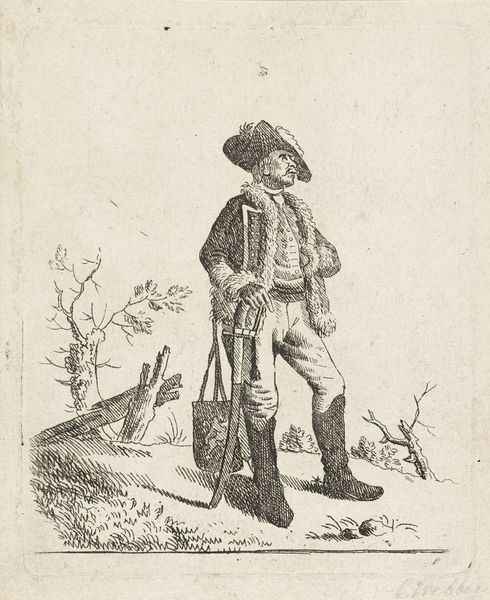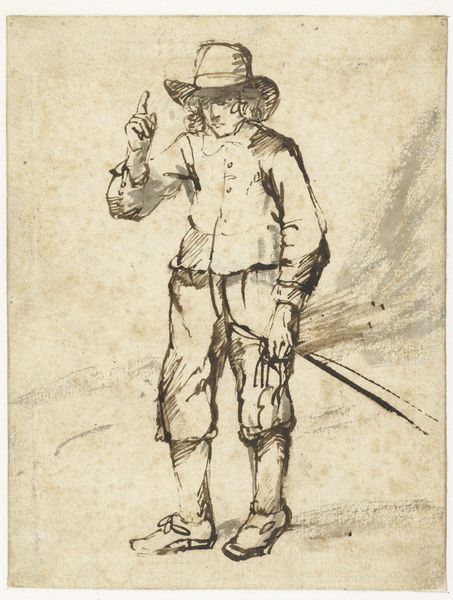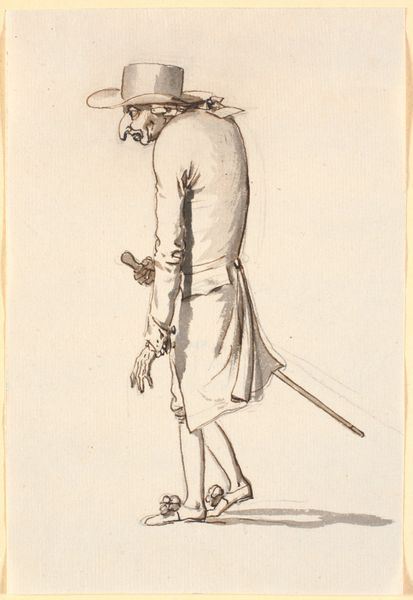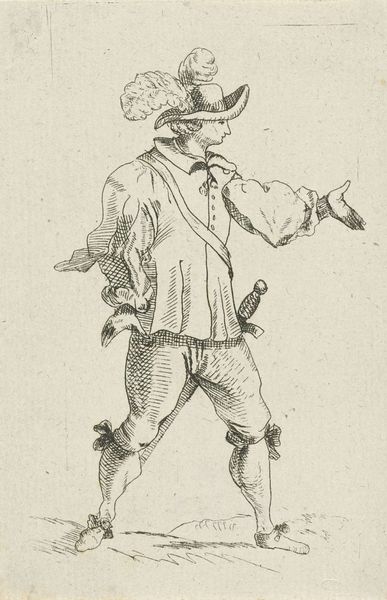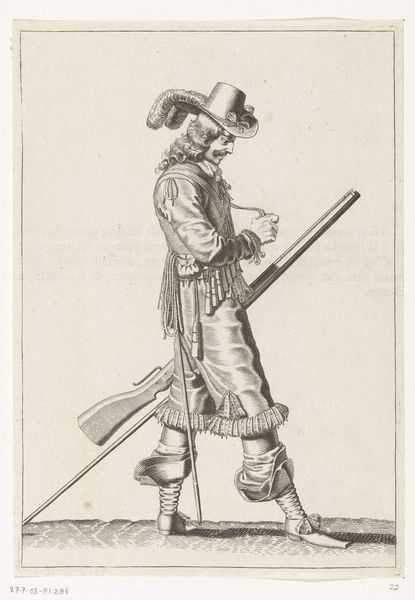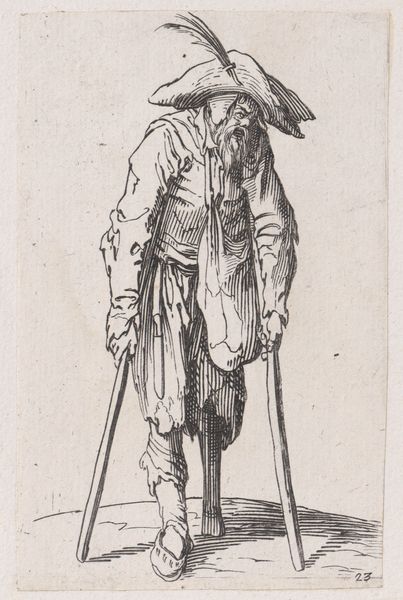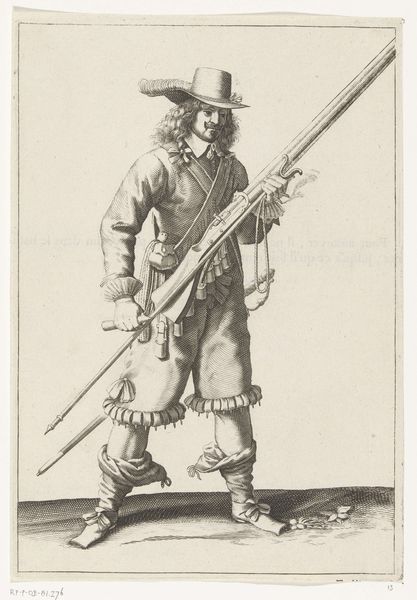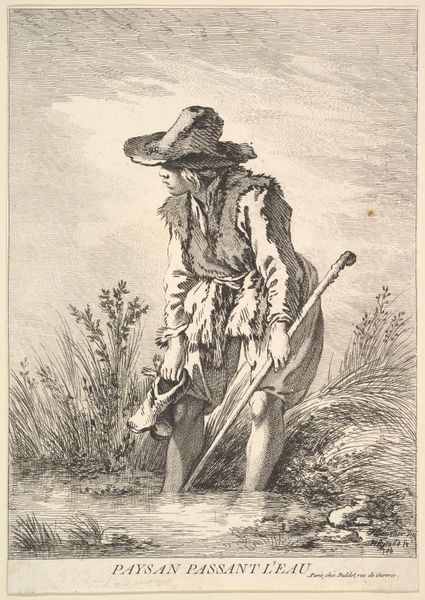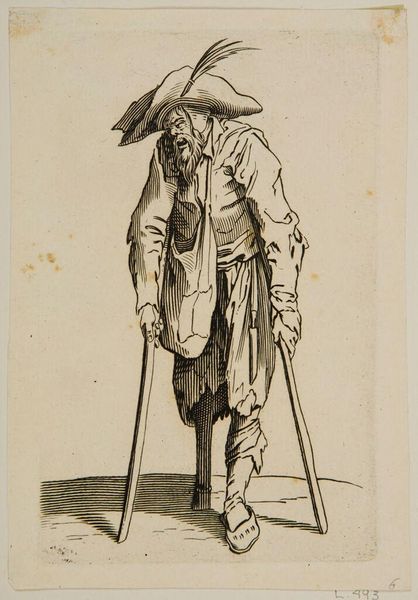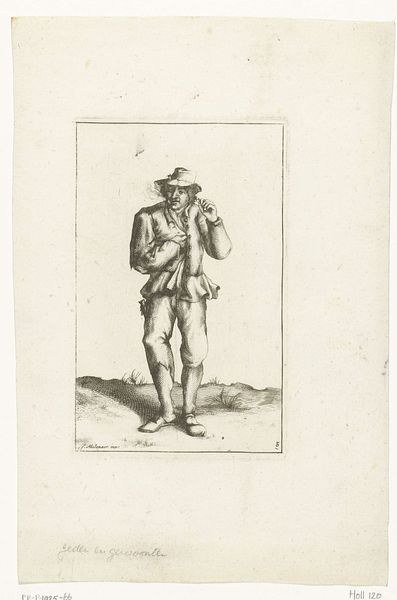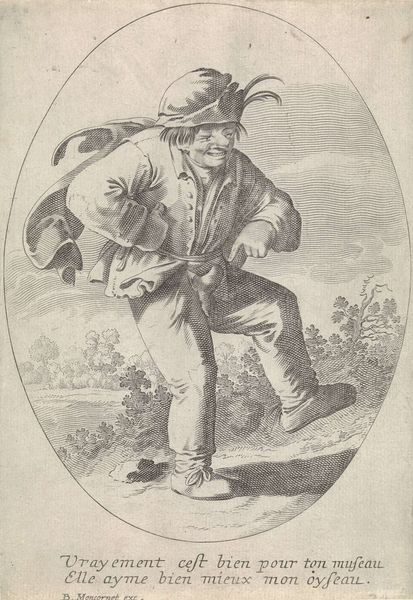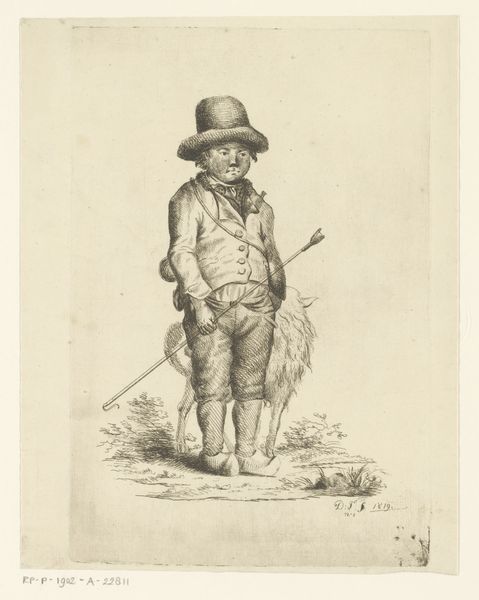
drawing, paper, ink
#
portrait
#
drawing
#
imaginative character sketch
#
neoclacissism
#
light pencil work
#
quirky sketch
#
pencil sketch
#
paper
#
personal sketchbook
#
ink
#
idea generation sketch
#
ink drawing experimentation
#
pen-ink sketch
#
sketchbook drawing
#
genre-painting
#
sketchbook art
Dimensions: height 164 mm, width 111 mm
Copyright: Rijks Museum: Open Domain
Curator: Let's turn our attention to this drawing, "Man with a Newspaper," crafted in 1798 by Pieter Kikkert, utilizing ink on paper. What’s your initial response? Editor: There’s a striking stillness about him, despite the implication of movement with his cane. The heavy coat and hat… they seem to weigh him down, adding to a somber, almost melancholic, mood. Curator: That perceived weight speaks to something, I think. The French Revolution looms large in 1798. It is hard to know whether the figure reads a paper propagating revolutionary terror or the slow crumbling of enlightenment ideals. The man's very posture seems to mirror a society grappling with radical upheaval. Editor: I’m immediately drawn to the newspaper itself. Its presence suggests a cultural shift toward increased literacy and information dissemination, wouldn’t you agree? We often see books and other reading materials as potent signifiers of status, even power. Curator: Exactly. And yet, in a world increasingly mediated by text and print, who gets access to that power? How does the proliferation of newspapers shape and manipulate public opinion? What are the conditions in the streets that bring such a man, with such burdens, to pause and take notice? These were new questions surfacing alongside modern governance, citizenship, and identity. Editor: He could almost be a representation of “Everyman”, cautiously navigating a changing world. The way the artist captures light and shadow contributes to this. It's as if the man is emerging from darkness into a tentative dawn. Perhaps an age where a new “vox populi” takes form, a public voice defined through—and debated across—printed media? Curator: Perhaps. Ultimately, Kikkert’s choice of such a character underscores the uncertainties and anxieties of an era undergoing profound change and his art asks who that era actually belongs to. Editor: The enduring power of images! Kikkert offers us a lens to scrutinize not just a man and his newspaper, but our own relationships to the texts that shape us today. Curator: Indeed. The past speaks in echoes we should always work to translate.
Comments
No comments
Be the first to comment and join the conversation on the ultimate creative platform.
